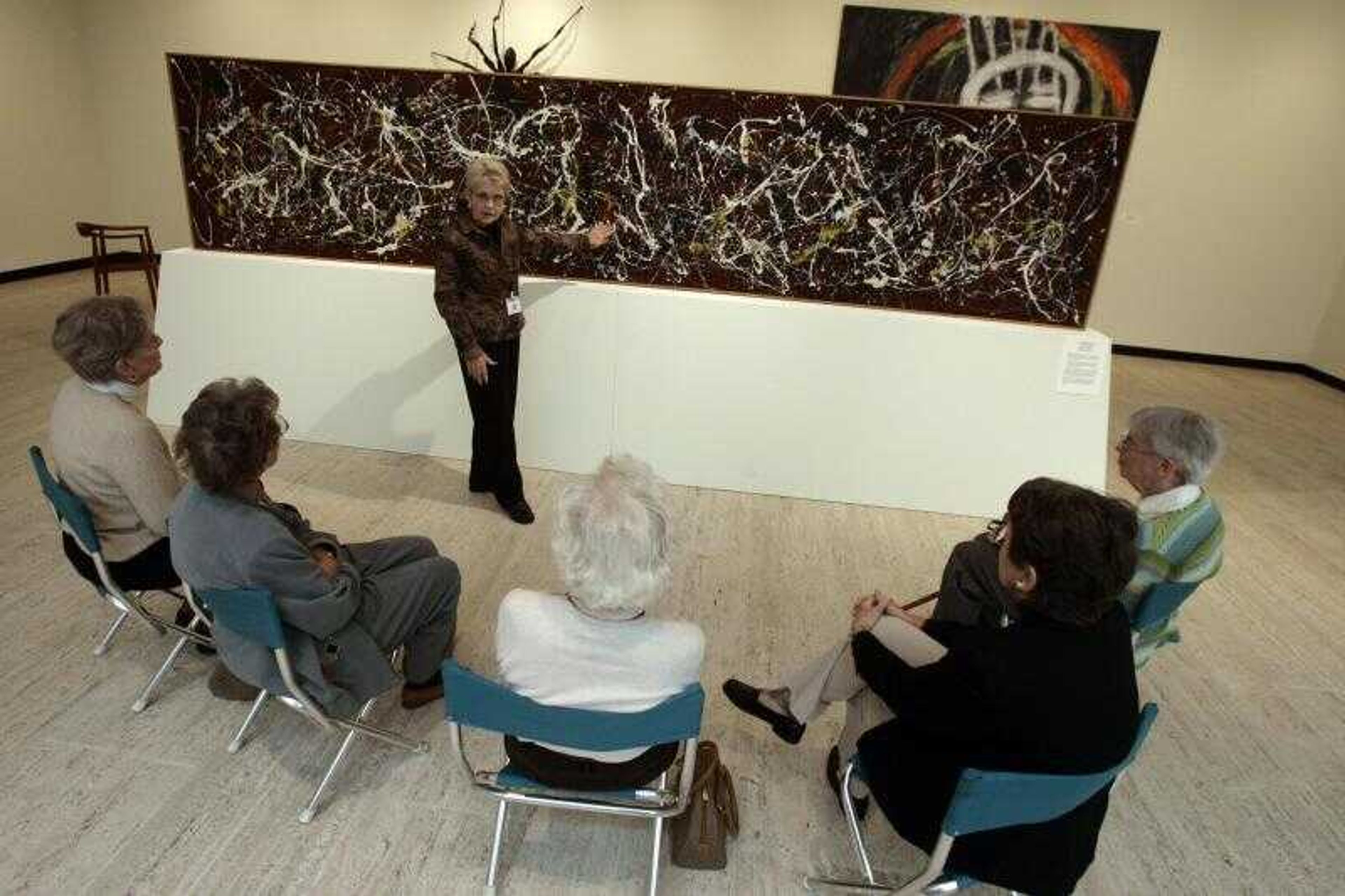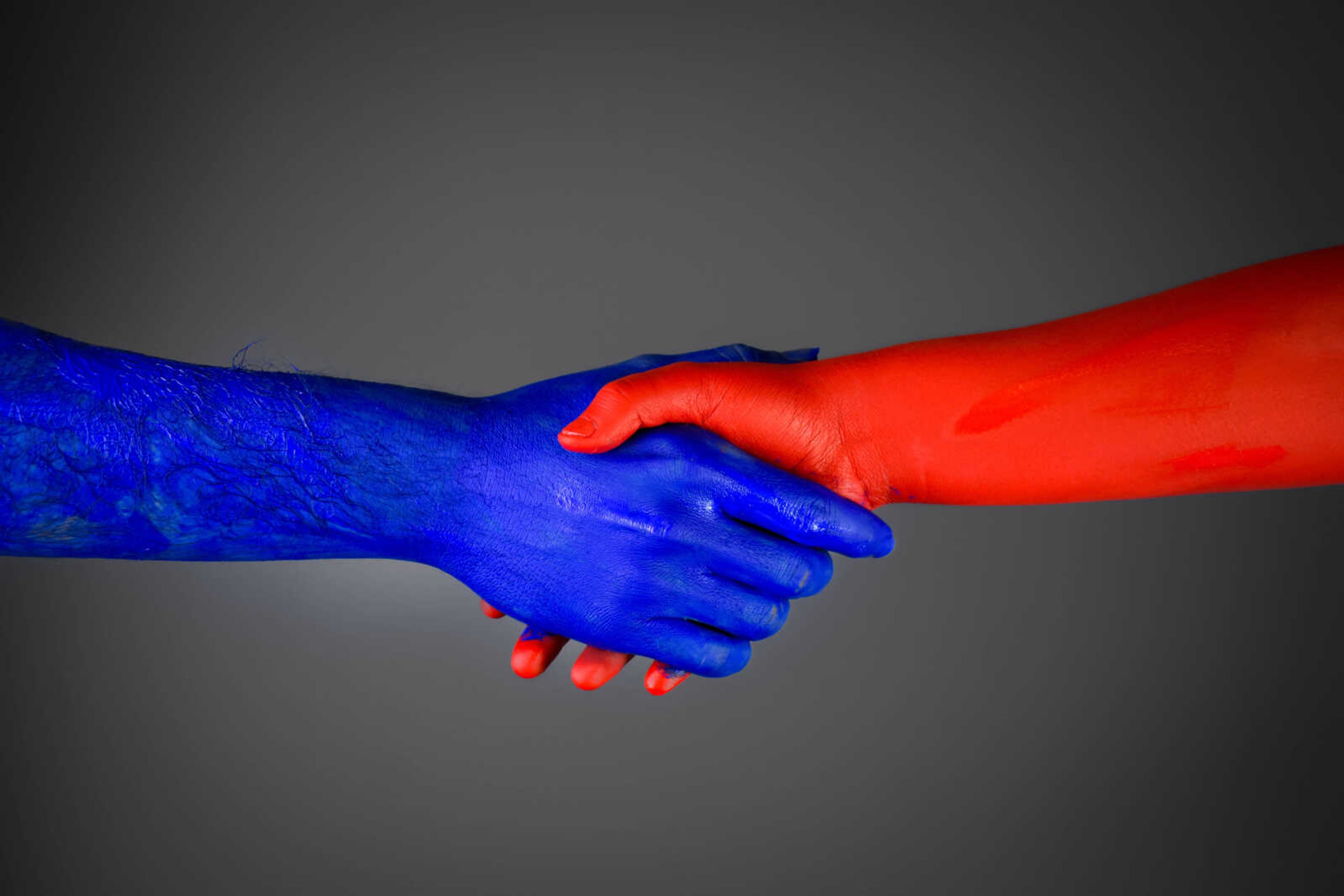Prominent Pollock piece preserved for the public
UTICA, N.Y. -- For the first time in nearly a half-century, Jackson Pollock's monumental frieze painting, "No. 2, 1949," is being seen as the artist created it. One of Pollock's pioneering paintings from his classic "drip" period, "No. 2" was covered front and back with polyvinyl acetate in 1959 by a well-intentioned museum conservator at the Munson Williams Proctor Museum of Art in Utica...
UTICA, N.Y. -- For the first time in nearly a half-century, Jackson Pollock's monumental frieze painting, "No. 2, 1949," is being seen as the artist created it.
One of Pollock's pioneering paintings from his classic "drip" period, "No. 2" was covered front and back with polyvinyl acetate in 1959 by a well-intentioned museum conservator at the Munson Williams Proctor Museum of Art in Utica.
Application of PVA was a standard conservation practice at the time. The veneer arrested the cracking and flaking that was slowly damaging the painting. But it also left a blue-gray sheen that dulled the Indian red background and the layers of glossy colors.
Now, after undergoing conservation treatment at Williams Col¿l¿ege in Massachusetts, the museum's masterpiece is back on display.
"More than likely, this more closely approximates what Jackson Pollock originally intended, than the way it had been since the time the varnish had been put on," said Paul Schweizer, the museum's director.
Removing the coating has improved how the 16-foot-long painting looks, creating more depth by allowing the brighter colors to come forward and the background to recede, Schweizer said.
"It opens up the colors. It makes it as fresh and exciting as it was when it was first painted," said Schweizer, who proudly promotes that the museum purchased "No. 2, 1949" directly from Pollock himself in 1954.
The difference is subtle but effective, said Helen Harrison, executive director of the Pollock-Krasner House and Study Center at the State University of New York-Stonybrook, which includes the studio in which Pollock worked for the final decade of his life.
"The treatment brought the texture and reflective qualities to the surface. It is much punchier," said Harrison. "This is Pollock at the height of his power."
Pollock evolved into one of modern America's most commanding painters during the 1940s and 1950s before dying in a drunken-driving accident in 1956 at age 44.
In the mid-1940s, Pollock introduced radical innovations using pour and drip techniques to a new form of painting that would become abstract expressionism.
; instead of brushes he manipulated paint with sticks, trowels and knives; sometimes he would add sand, broken glass, thumbtacks and other foreign materials to his paint.
"Jackson took painting off the easel and made it OK in large measure to extend the gesture of painting, in this case onto the floor," Schweizer said. "In the context of the late 1940s, it was an extraordinary act to put a piece of canvas on the floor ... to throw away and jettison the entire 500-year tradition of craftsmanship that was part of the history of art. By dripping and choreographing paint onto the surface, the act of painting became part of the art."
While some critics dismissed Pollock's work as meaningless and chaotic, others trumpeted them as superbly organized, visually fascinating and psychologically compelling, said Harrison.
"In most paintings, you don't see the artist's hand because they are painting a picture of something. In Pollock, the strokes themselves reflect all the energy, movement and improvisation that went into their creation," Harrison said.
Interest in Pollock has rekindled over the past decade.
In 1998, the Museum of Modern Art put on a major Pollock retrospective, which included No. 2. In 2000, actor Ed Harris portrayed the troubled artist in "Pollock," for which he was nominated for a best actor Academy Award; Marcia Gay Harden won an Oscar for best supporting actress for her portrayal of Pollock's wife, artist Lee Krasner.
Earlier this year, a debate was ignited when 32 alleged experimental Pollock pieces were discovered by the son of Pollock's good friend, photographer Herbert Matter. The authenticity of the pieces continues to be contested.
Restoration work on "No. 2, 1949" began in 1998 when the Utica museum agreed to loan the piece to the Museum of Modern Art in New York City for its Pollock exhibition.
Thomas Branchick, a conservation expert at the Williamstown Art Conservation Center, helped prepare the extremely fragile, rarely traveled painting for shipment. At the time, he added a thermoplastic adhesive to several dime-sized cracks to stabilize the painting for its travels.
In March, the painting was sent back to Branchick to be stripped of its PVA coating.
Branchick applied ethanol to the front of the painting. The ethanol left the paint untouched, but dissolved the PVA, which then seeped out the back, where it was soaked up using blotters. It took about 30 minutes to apply the ethanol. Branchick said the real time-consuming work came in testing the process and materials.
"It was a very intimidating painting to work on -- not just because it carries such a high dollar appraisal. This is Pollock at his best," said Branchick.
After the painstaking work was completed, "No. 2, 1949" was put on exhibit along with "No. 13A, 1948: Arabesque," owned by Yale University, and "No. 7, 1950," held by the Museum of Modern Art.
In Utica, museum visitors will get a second, rarely seen perspective of the work, he said.
For a short time, instead of hanging in its place of prominence on the museum's main floor, the painting is being displayed on a plinth -- a trapezoidal pedestal. For the first time, visitors can view the reverse side of the paper-thin canvas.
Examining the back, Schweizer points out the impressions left by Pollock tools as he spread the layered paint onto the canvas, a piece of flooring from Pollock's studio that pulled up and attached itself to the paint as it was drying nearly 60 years ago, even pet hairs.
---
On the Net:
Jackson-Krasner House and Study Center: http://naples.cc.sunysb.edu/CAS/pkhouse.nsf
Munson Williams Proctor Museum of Art: http://mwpai.org/museum
Williams College Museum of Art: www.wcma.org
Connect with the Southeast Missourian Newsroom:
For corrections to this story or other insights for the editor, click here. To submit a letter to the editor, click here. To learn about the Southeast Missourian’s AI Policy, click here.










